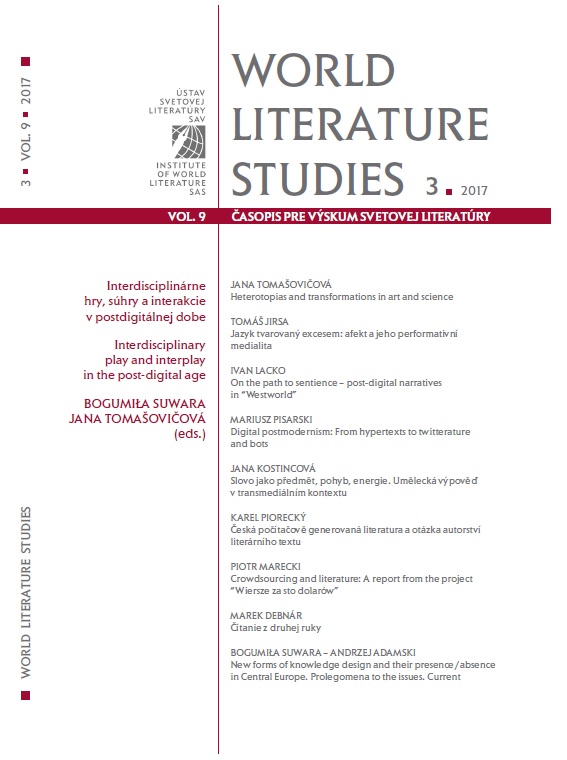Heterotopias and transformations in art and science
Heterotopias and transformations in art and science
Author(s): Jana TomašovičováSubject(s): Language and Literature Studies
Published by: SAV - Slovenská akadémia vied - Ústav svetovej literatúry
Keywords: Heterotopias; Digital media; Database; Transformation; Mapping; Molecular system of the human organism
Summary/Abstract: Michel Foucault characterized heterotopias as specific spaces which disrupt and overturn our existing systems, the hitherto valid order of things and also our ways of thinking. They are significantly important particularly from the point of view of culture, since they affect cultural dynamic transformations. The author in her contribution points out that we presently discover such specific spaces mainly by means of modern technologies. Regarding digital media, the database – a collection of digital data – has a heterotopic character; it neutralizes the present forms of orders and preferences. Images, sounds and words are loosened from their indexicality and are converted into numerical code, which enables the modification and combination of the obtained data. The database thus represents a new type of space which subverts the standard organization of signs. Modern technologies also unveil other unconventional spaces of our micro and macro worlds. The newest medical technologies such as ultrasound, computed tomography and magnetic resonance imaging penetrate through the surface of the human body into the depths of biological structures in order to obtain their image, and they indeed make the molecular system of the human organism visible. This molecular system can be characterized by high complexity, multifunctionality and highly variable interactions, and the medical technologies in a certain way contribute to the fact that our forms of knowledge are constantly enhanced, extended and sometimes even refuted. This current expansion of heterotopia corresponds with Foucault’s opinion that every epoch creates its own spaces which strive to gain their legitimacy. It is interesting that in both cases of the above-mentioned examples of heterotopia the data transformation can be seen as a significant form of their element arrangement, and thus the borders not only between semiotic systems but also between scientific and artistic discourses are gradually wiped out.
Journal: World Literature Studies
- Issue Year: 9/2017
- Issue No: 3
- Page Range: 3-13
- Page Count: 11
- Language: English

